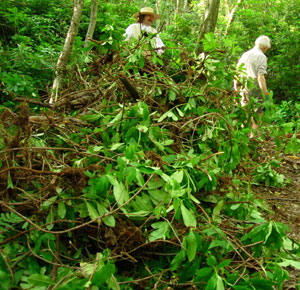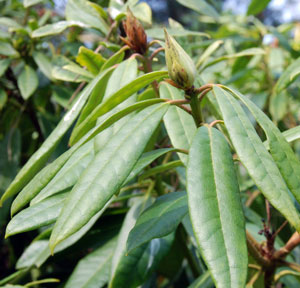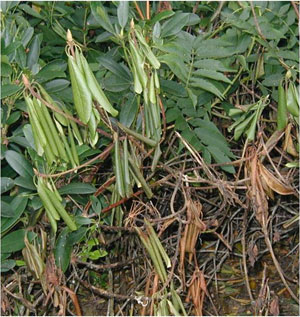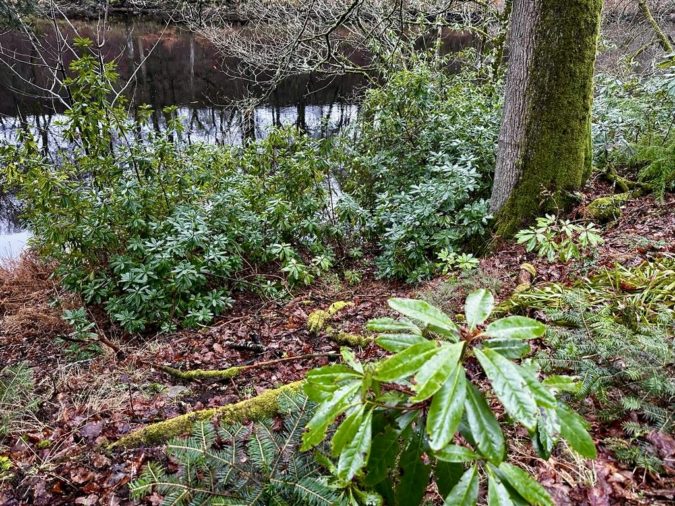Rhododendron ponticum revisited

In the eighteenth and nineteenth century, many explorers / adventurers brought ‘exotic’ plants back to the United Kingdom. These ‘exotics’ were planted in arboreta, botanic gardens, and some in gardens. One bush that was introduced was Rhododendron ponticum. The plant is native to the eastern and western Mediterranean, and the Pontic Mountains, hence its name). It was introduced into Britain in the late eighteenth century, by Conrad Loddiges. It was planted in Victorian hunting estates, also on heathland areas to provide shelter for game species. Its rootstock has been used for grafting of less hardy, more colourful types. Many Rhododendron species are a delight and an adornment to our parks and gardens, indeed many hundreds of species of Rhododendron are known (many in China and the Himalayas)*. Rhododendron ponticum has proved to be invasive. It is a threat to key parts of our woodland ecosystems, such as Atlantic Oak Woodland.
Atlantic oak woodland is sometimes referred to as Celtic Rainforest. It is characterised by lichen covered trees, growing amongst a rich moss and liverwort flora. This woodland environment is damp and humid, to which streams and waterfalls contribute. These woodlands have evolved under the influence of the Gulf Stream, which helps keeps warm and wet the area. In some parts of the country, the woodlands have remained in their 'ancient state', since the last ice age. However, these woodlands were more extensive but now exist as much smaller ‘pockets’ - damaged by grazing, pollution, and ‘exotics or aliens’ like R. ponticum.
 When this shrub ‘invades’, it 'takes over' and the woodland floor becomes a dark and barren place. A deep shade results from the thickets of the Rhododendron. This results in the loss of much of the ground flora so that only some shade tolerant mosses and liverworts remain. They form a ‘mat’ of dense vegetation that is a barrier to seed germination. Even when the Rhododendron thicket is removed, the re-establishment of the original flora is compromised. There is also evidence that as it grows this shrub produces chemicals which inhibit the growth of other species; this is known as allelopathy.
When this shrub ‘invades’, it 'takes over' and the woodland floor becomes a dark and barren place. A deep shade results from the thickets of the Rhododendron. This results in the loss of much of the ground flora so that only some shade tolerant mosses and liverworts remain. They form a ‘mat’ of dense vegetation that is a barrier to seed germination. Even when the Rhododendron thicket is removed, the re-establishment of the original flora is compromised. There is also evidence that as it grows this shrub produces chemicals which inhibit the growth of other species; this is known as allelopathy.
R.ponticum has spread in many areas, mainly to the West of the country. Each flower can produce several thousand seeds, so that a large bush can produce several million seeds in year. These seeds are tiny and wind dispersed; and though not all the seeds will germinate and grow, many will and colonise an area. Even when bushes have been removed from an area and the litter layer cleared, the seeds may persist in the seed bank of the soil - allowing the species to recolonise. In consequence, follow up over a five year period is really important.
 Recent figures suggests that some 37,000 hectares are affected in the UK. Though the government does make a grant available for the removal of Rhododendron, progress with its removal has been slow. In Wales, there is a project called the Celtic Rainforests Project (YouTube video link here) that focuses on invasive species and their attempted eradication in Atlantic Oak Woodlands in Wales. With the agreement of the landowner, the project will organise surveys to identify the scale of the problem, and then contractors to carry out the work over the period of a management agreement, at no cost to the landowner [woodlands.co.uk has groups of buyers who have agreed for their various woods to be covered by such management agreements].
Recent figures suggests that some 37,000 hectares are affected in the UK. Though the government does make a grant available for the removal of Rhododendron, progress with its removal has been slow. In Wales, there is a project called the Celtic Rainforests Project (YouTube video link here) that focuses on invasive species and their attempted eradication in Atlantic Oak Woodlands in Wales. With the agreement of the landowner, the project will organise surveys to identify the scale of the problem, and then contractors to carry out the work over the period of a management agreement, at no cost to the landowner [woodlands.co.uk has groups of buyers who have agreed for their various woods to be covered by such management agreements].
Clearing an area of this plant is difficult and expensive. An effective first treatment to eliminate R. ponticum is to drill the stems, and inject herbicide directly into the plant. This uses a lot less herbicide than spraying, and is a selective approach. Mabberley’s Plant-book notes that the cost of eradicating the plant from Snowdonia was £30 M and that was in 1988. Further information about the work in the welsh oak woodlands here. The plant is also a problem in Ireland. Indeed, referring to the Killarney National Park a politician has said “nothing short of calling in the army is going to put it right.”

Rhododendron ponticum growing near to the River Tay.
Forest Research has a number of publications about the management and control of R. ponticum.
* Details of the genus may be found in Mabberley's Plant-Book.
With thanks to Chris Colley
Comments are closed for this post.
